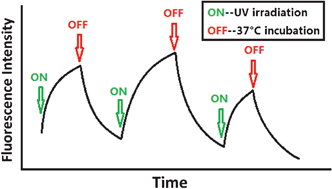Photo-responsive release of ascorbic acid and catalase in CDBA-liposome for commercial application as a sunscreen cosmetic
Abstract
Long-term exposure of the skin to UV light causes degenerative effects, which can be minimized by using

* Corresponding authors
a Biomedical Engineering, Shanghai Jiao Tong University, 800 DongChuan Road, Shanghai, PR China
b
Shanghai Institute of Organic Chemistry, Chinese Academy of Sciences, 354 Fenglin Road, Shanghai, PR China
E-mail:
jinyewang@sjtu.edu.cn
Fax: 021-34205824
Long-term exposure of the skin to UV light causes degenerative effects, which can be minimized by using

 Please wait while we load your content...
Something went wrong. Try again?
Please wait while we load your content...
Something went wrong. Try again?
Y. Dai, G. Qin, S. Geng, B. Yang, Q. Xu and J. Wang, RSC Adv., 2012, 2, 3340 DOI: 10.1039/C2RA01171A
To request permission to reproduce material from this article, please go to the Copyright Clearance Center request page.
If you are an author contributing to an RSC publication, you do not need to request permission provided correct acknowledgement is given.
If you are the author of this article, you do not need to request permission to reproduce figures and diagrams provided correct acknowledgement is given. If you want to reproduce the whole article in a third-party publication (excluding your thesis/dissertation for which permission is not required) please go to the Copyright Clearance Center request page.
Read more about how to correctly acknowledge RSC content.
 Fetching data from CrossRef.
Fetching data from CrossRef.
This may take some time to load.
Loading related content
